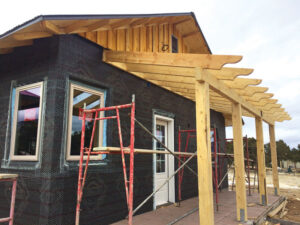By Peter Anderson
1. Dear Blanca,
On this postcard we see you from the north. The clouds have saddled up on your high ridges, where for a while, they will stay, until they realize you’re not going anywhere. Then they’ll get restless. One of them will say something like, “Hey, I’m gonna get me a ride on the wind and head out to the prairie … maybe see what Dodge City ain’t got.” Others will follow. Clouds roll like that.
2. Dear Blanca,
This postcard pictures you as photographed by the Wheeler Survey. They were the first Anglos to climb your summit, although there are some who dispute that claim. Certainly, they were the first ones to gather data for a good map. If they did make the summit, we know they weren’t the very first. Someone – a hunter perhaps, or a lookout – had already made a wall of stone up there, maybe for shelter, maybe for protection, maybe to render themselves invisible to their prey. Who knows? You do.
3. Dear Blanca,
The photo on this postcard must have been taken somewhere up in the south San Juans looking east. Your looming presence shines underneath a cloudless summer sky. It is not hard to imagine, from this vantage point, how you would have made a huge impression on the native people who came over these mountains and into our valley from the west. No wonder you found a way onto their maps of the sacred. They say First Man and First Woman brought you up from the underworld and fastened you to this ground with rainbows and lightning bolts. We are reminded of this in July when our rains often come. By the way, that part of the story that talks about soil from the underworld? Now, some biologists are saying that the first life forms on this planet, micro-organisms of some kind, came not from outer space, but emerged from the underground. But you already knew that.
4. Dear Blanca,
This postcard shows some mountaineers approaching you from Lake Como. Sure the clouds get restless, but it is not true that you never move. People who know their rocks tell us you are young and still growing. Well, not enough for most of us to notice. But when we are climbing you, we realize you are anything but sedentary. Ascending your high ridges, we take two steps up and you take one step back. Sometimes, we think we are closing in on your summit, but then we lose sight of it for an instant. The next time we look up, after circumventing the down side of one alpine obstacle or another, that part of you is not where we thought it was. Is your summit trying to avoid us?

